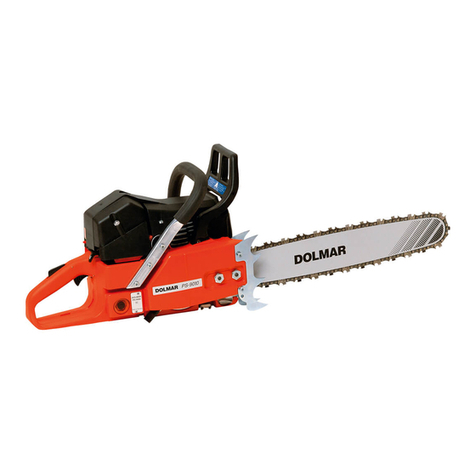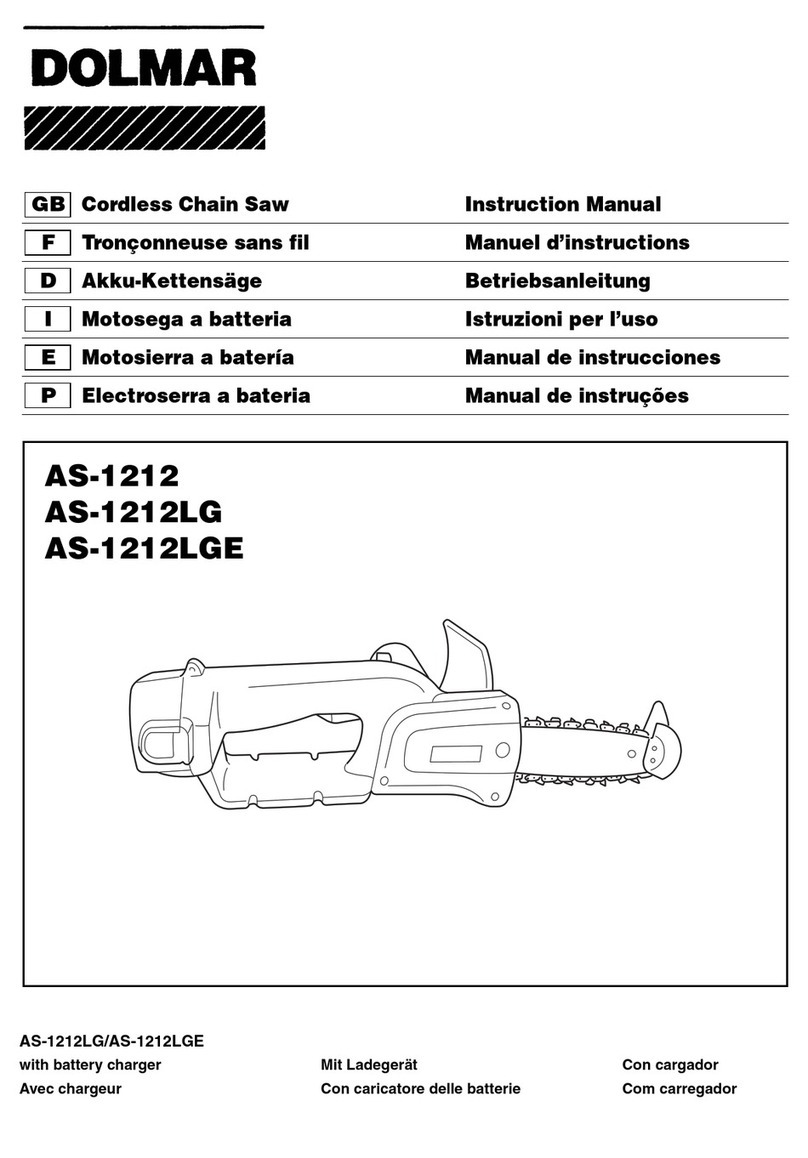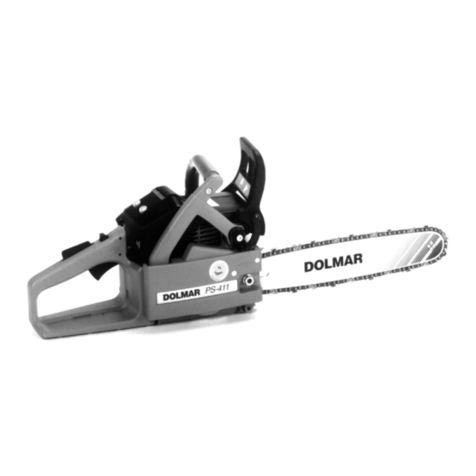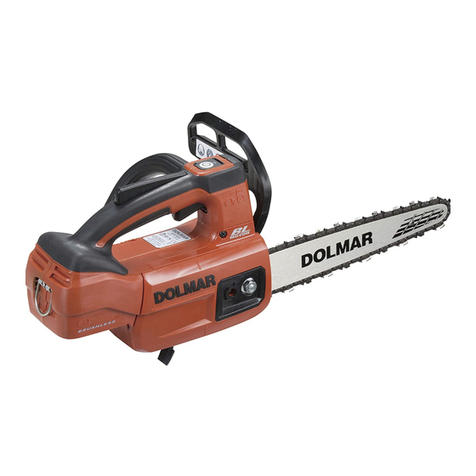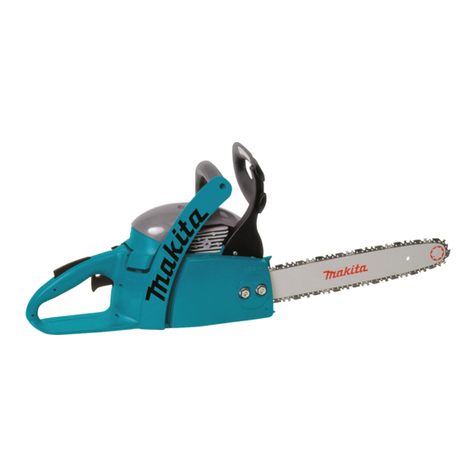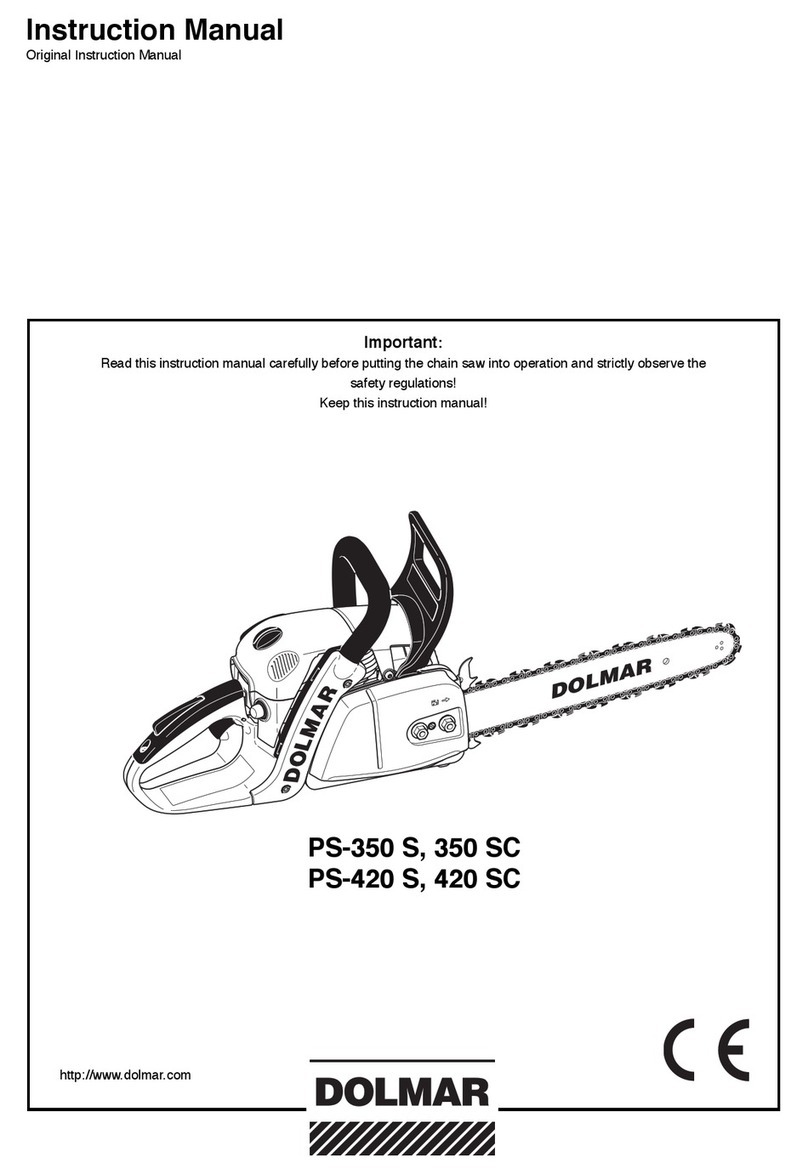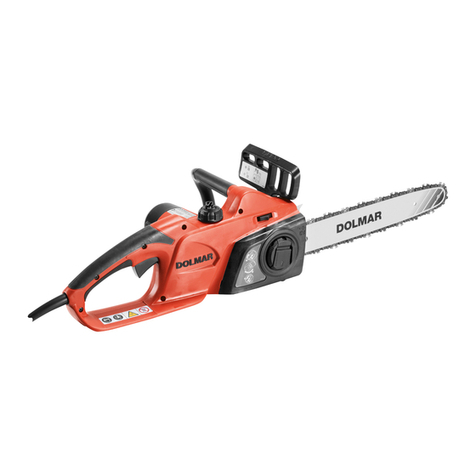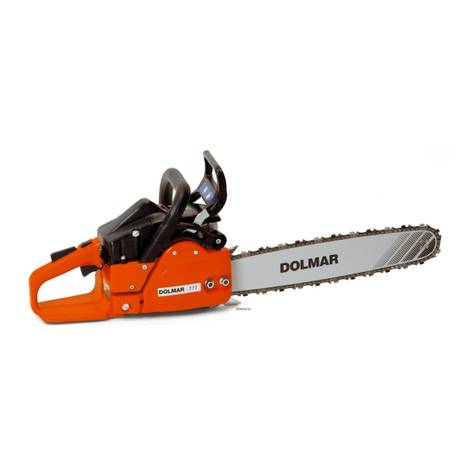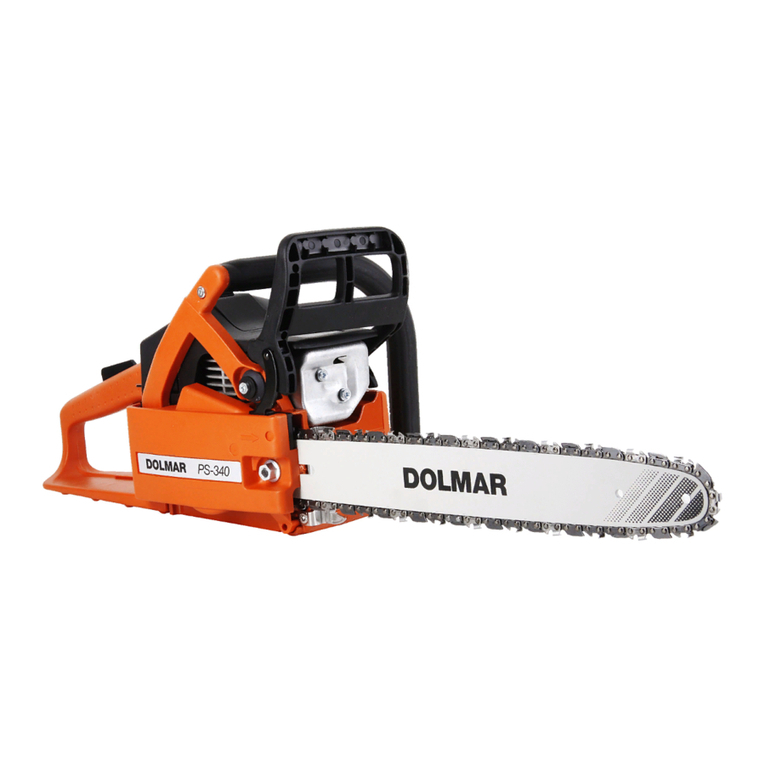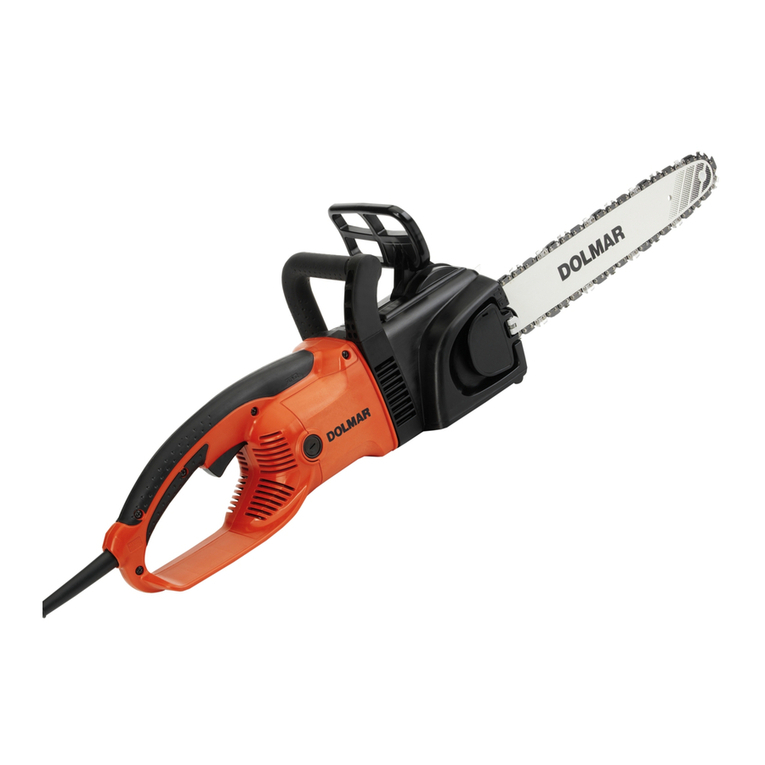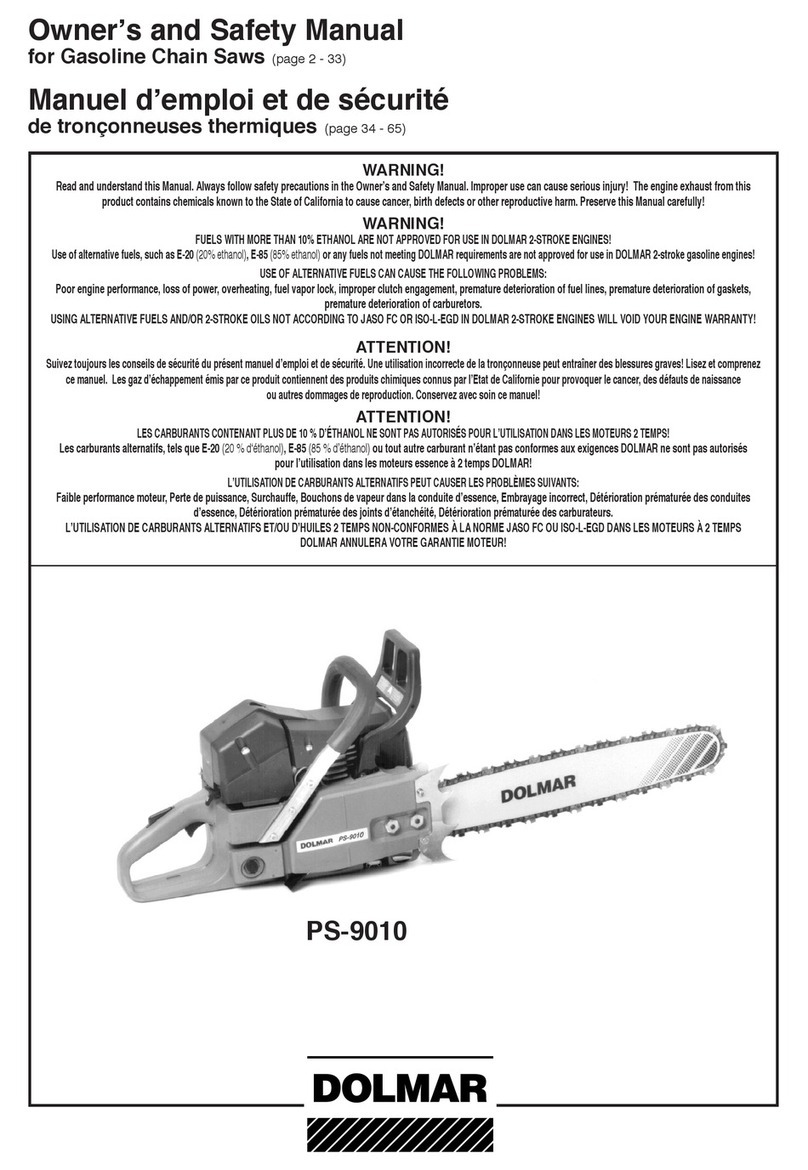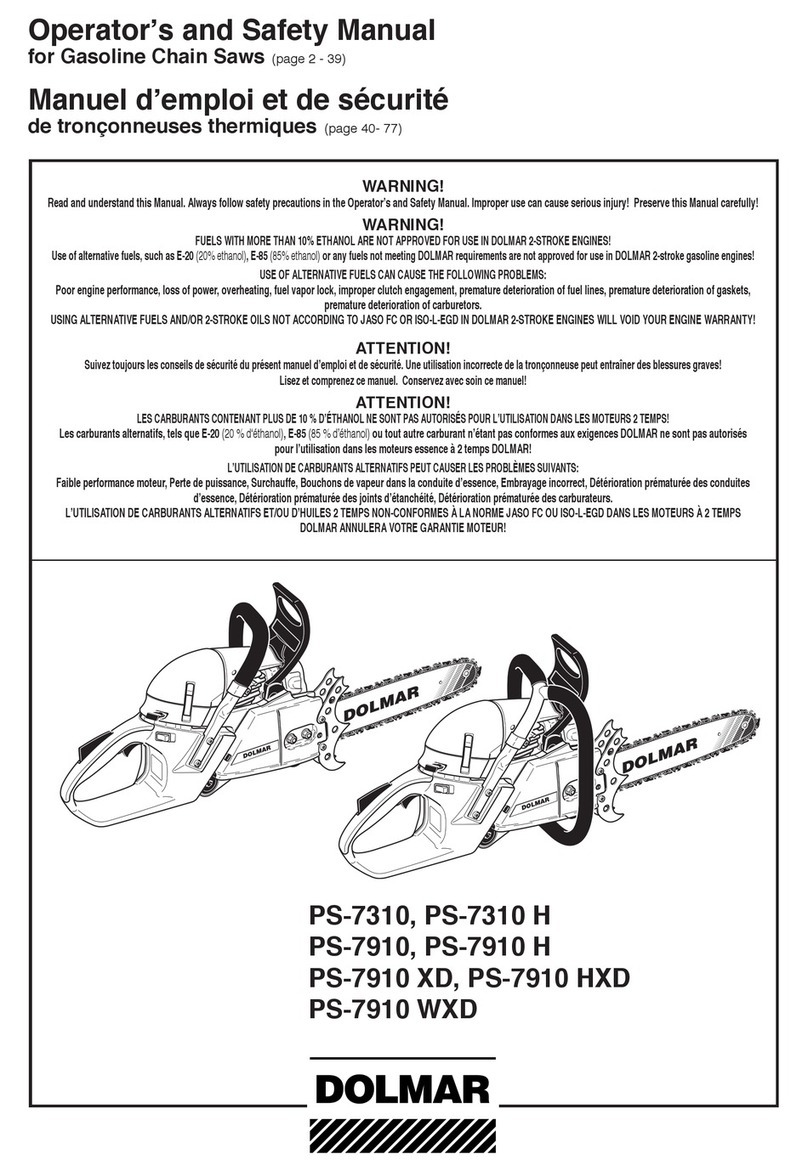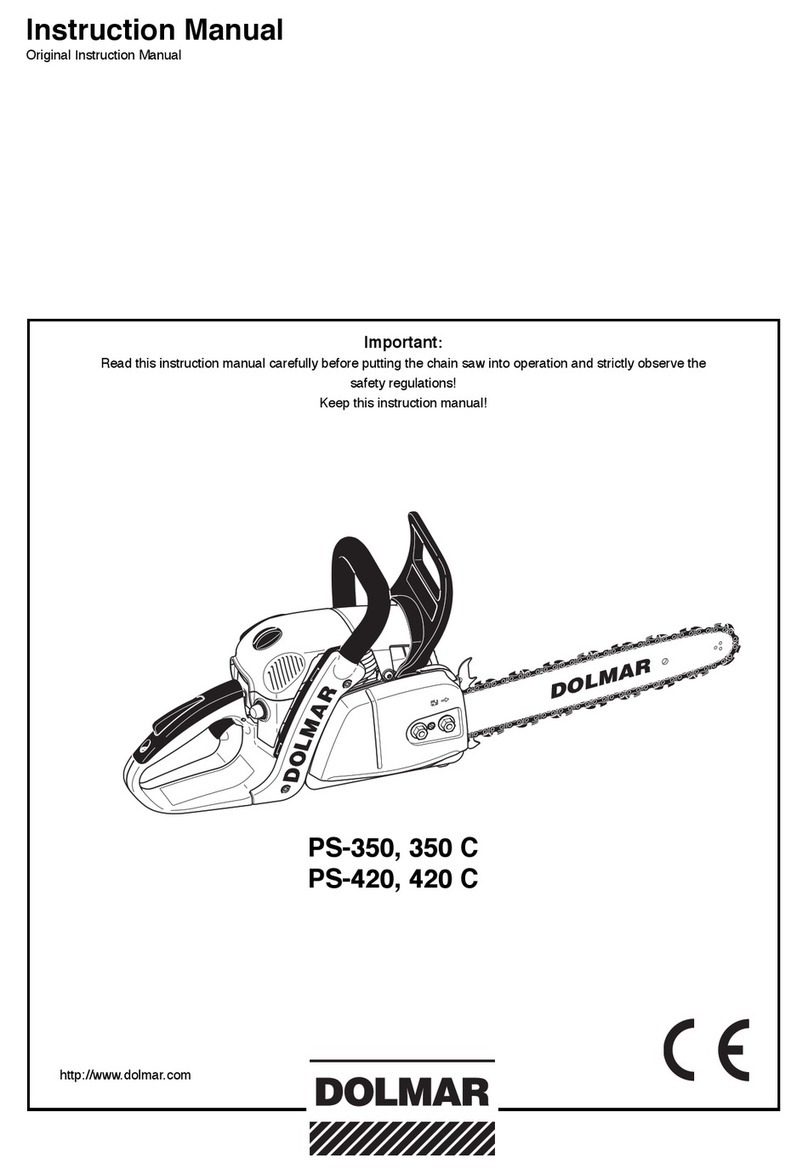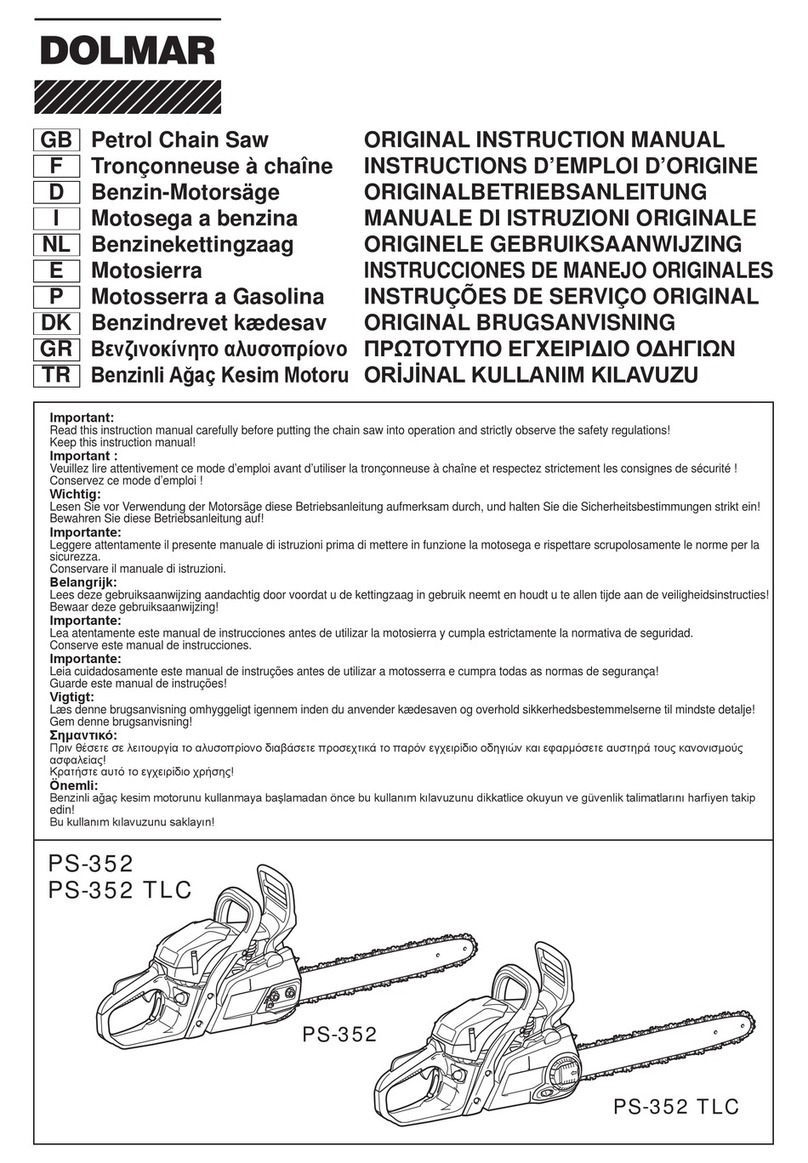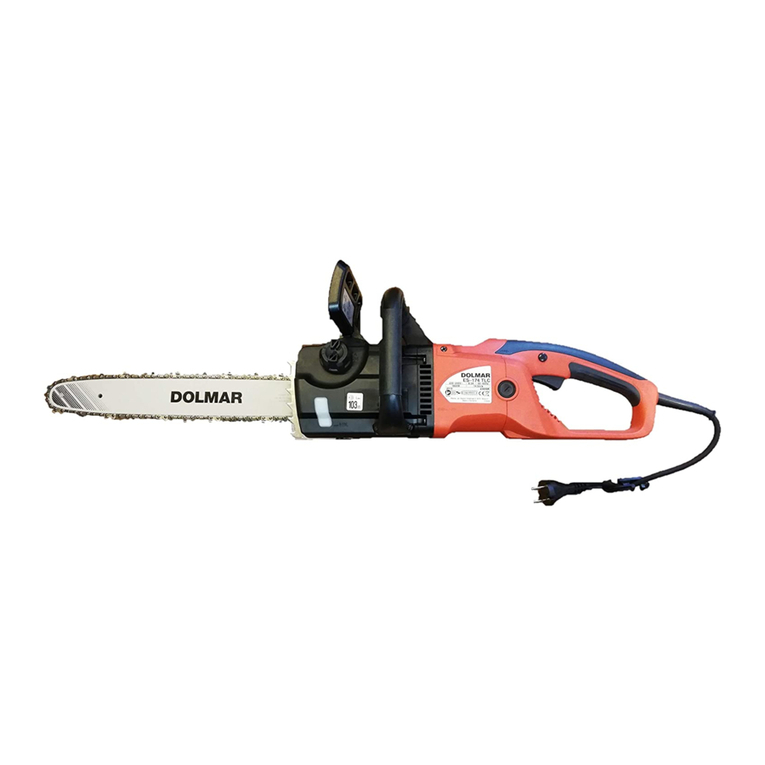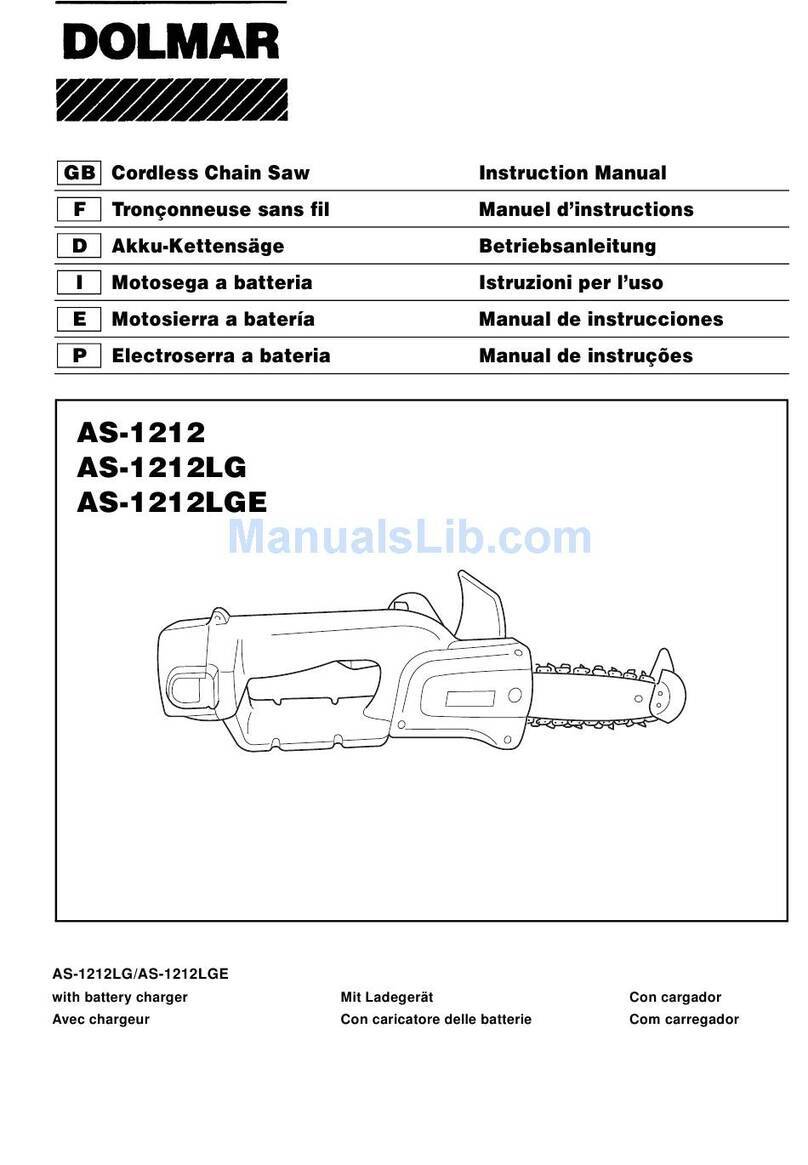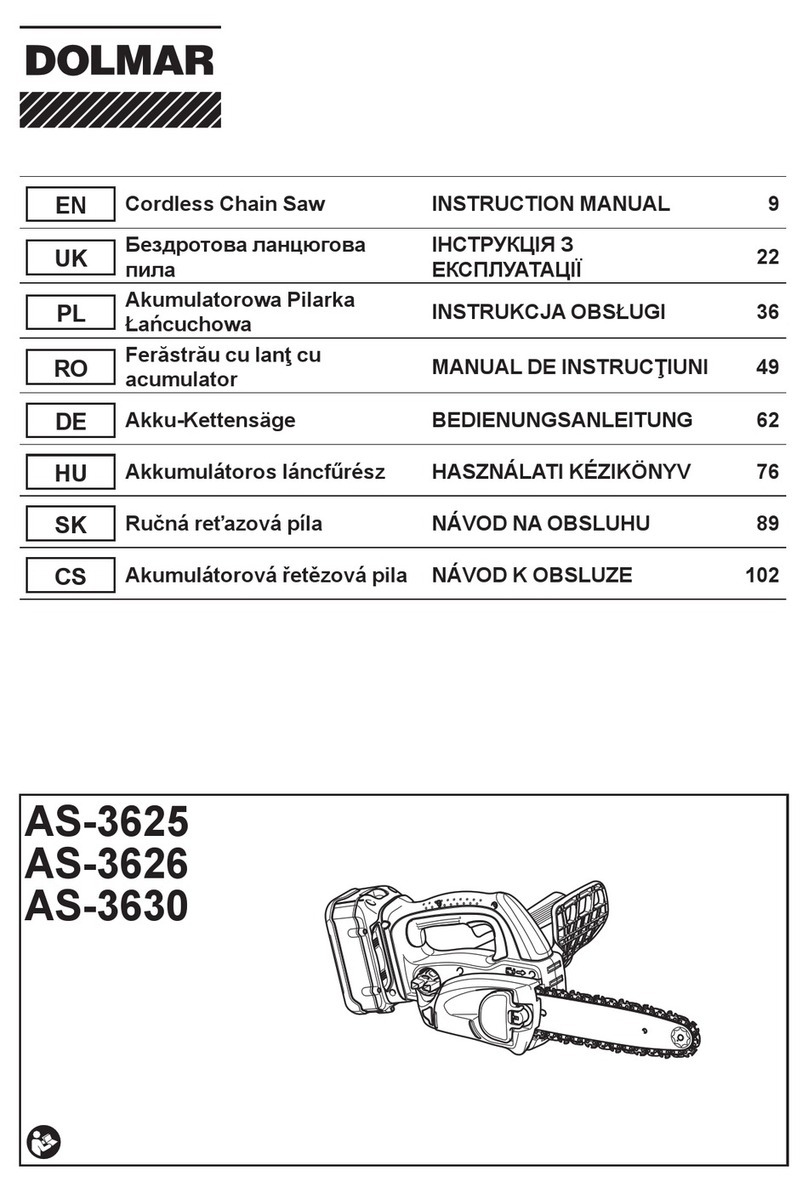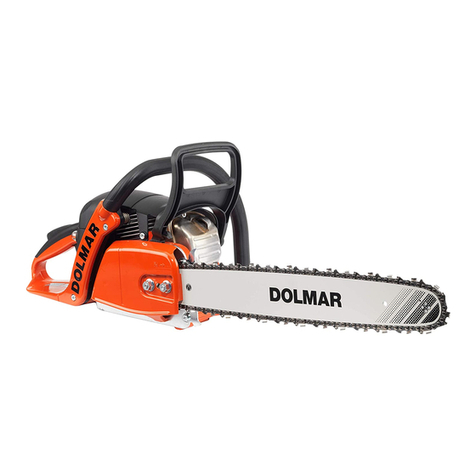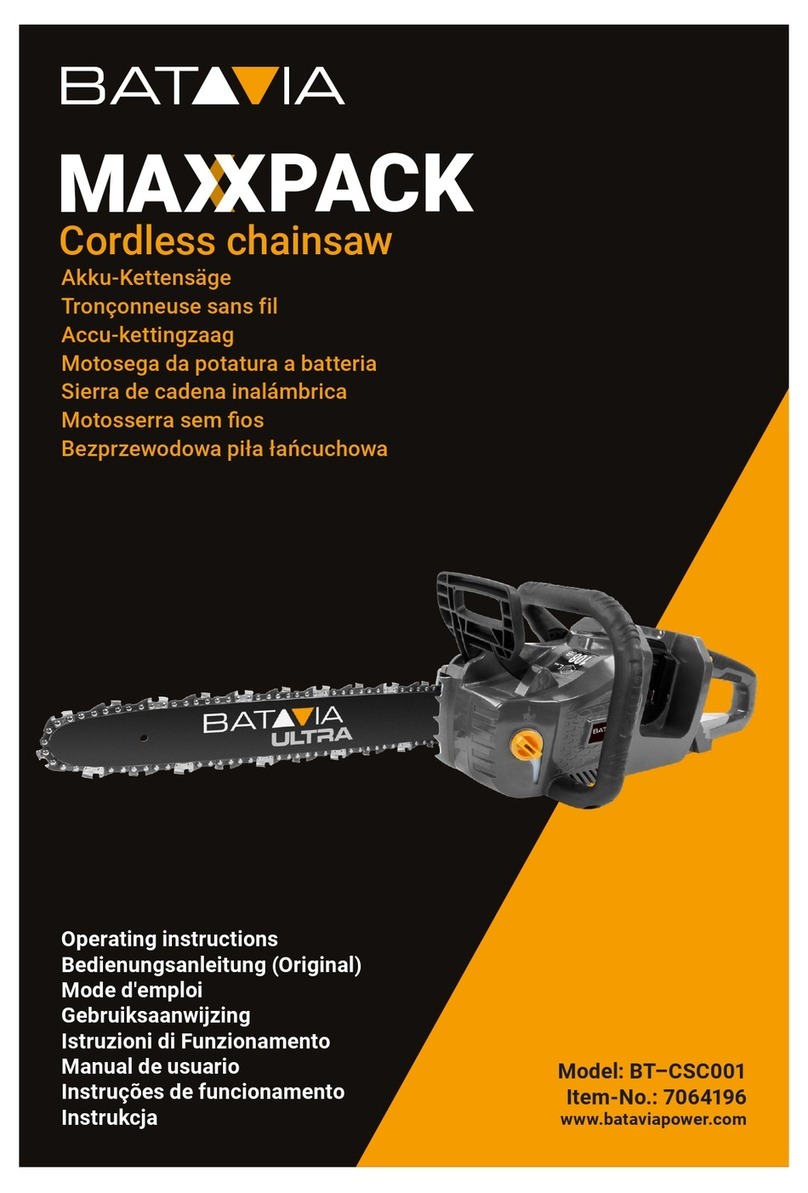Safety precautions for chain saw operators
While operating the chain saw please observe the
following rules:
a) Contact of the guide bar nose with any object
should be avoided.
b) Tip contact may cause the guide bar to move
suddenly upward and backward, which may cause
serious or fatal injury.
c) Always operate the chain saw with both hands.
WARNING!
Readandfollowallsafetyprecautionsintheowner’s
manual. Failure to follow instructions could result in
serious injury. It is recommended to lend the chain
saw only to people who are experienced in working
with chain saws. Always hand over the Owner’s and
Safety Manual.
WARNING!
This chain saw is capable of severe kickback
that could result in serious injury to the operator.
Do not operate this chain saw unless you have
extraordinary cutting needs and experience in and
special training for dealing with kickback. Chain
are available.
WARNING!
Kickbackmayoccurwhenthenoseortipoftheguide
bar touches an object, or when the wood closes in
and pinches the saw chain in the cut. This contact
mayabruptly stopthesawchain andinsomecases
maycausea lightning fastreverse reaction, kicking
the guide bar up and back towards the user, or push
the guide bar back towards the operator. Kickback
may cause you to lose control of the saw.
As a chain saw user, you can take several steps to
reduce the risk of a kickback and potential injury.
A. Withabasicunderstandingofkickback,youcan
reduceoreliminatetheelementof surprise.Itisa
sudden surprise that contributes to accidents.
hands, your right hand on the rear grip and
your left hand on the tubular handle, when the
maintain control of the saw. Don’t let go!
C. Make sure that the area in which you are cutting
is free from obstructions. Do not let the nose of
the guide bar contact the log, branch, or any
other obstructions which could be hit while you
are operating the saw.
D. Do not overreach or cut above shoulder
height.
E. Follow manufacturer’s sharpening and main-
tenance instructions for the saw chain.
by the manufacturer or the equivalent.
Additional safety precautions
The following additional safety precautions must be
observed by all users of chain saws:
1. Do not operate a chain saw when you are fatigued.
protective gloves; and eye, hearing, and head
protection devices.
3. Use caution when handling fuel. Move the chain
saw at least 10 feet (3 m) from the fueling point
before starting the engine.
4. Do not allow other persons to be near the chain
saw when starting or cutting with the chain saw.
Keep bystanders and animals out of the work
area.
5. Do not start cutting until you have a clear work
area, secure footing, and a planned retreat path
from the falling tree.
6. Keep all parts of your body away from the saw
chain when the engine is running.
7. Before you start the engine, make sure that the
saw chain is not contacting anything.
8. Carry the chain saw with the engine stopped,
the guide bar and saw chain to the rear, and the
9. Do not operate a chain saw that is damaged, is
improperly adjusted, or is not completely and
securely assembled. Be sure that the saw chain
stops moving when the throttle control trigger is
released.
brush and saplings because slender material
may catch the saw chain and be whipped toward
12. When cutting a limb that is under tension be alert
for springback so that you will not be struck when
13. Keep the handles dry, clean, and free of oil or fuel
mixture.
14. Operate the chain saw only in well-ventilated
areas.
15. Do not operate a chain saw in a tree unless you
16. All chain saw service, other than the items listed
in the owner’s manual maintenance instructions,
should be performed by DOLMAR. (For example,
if improper tools are used to remove the
17. When transporting your chain saw, use the chain
protection cover.
18. Low kickback bars and low kickback chains are
designed to reduce the risk of kickback injury.
Ask your DOLMAR dealer about these devices.
